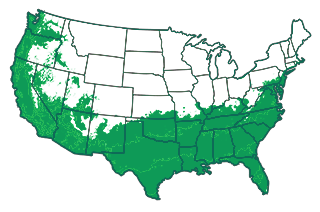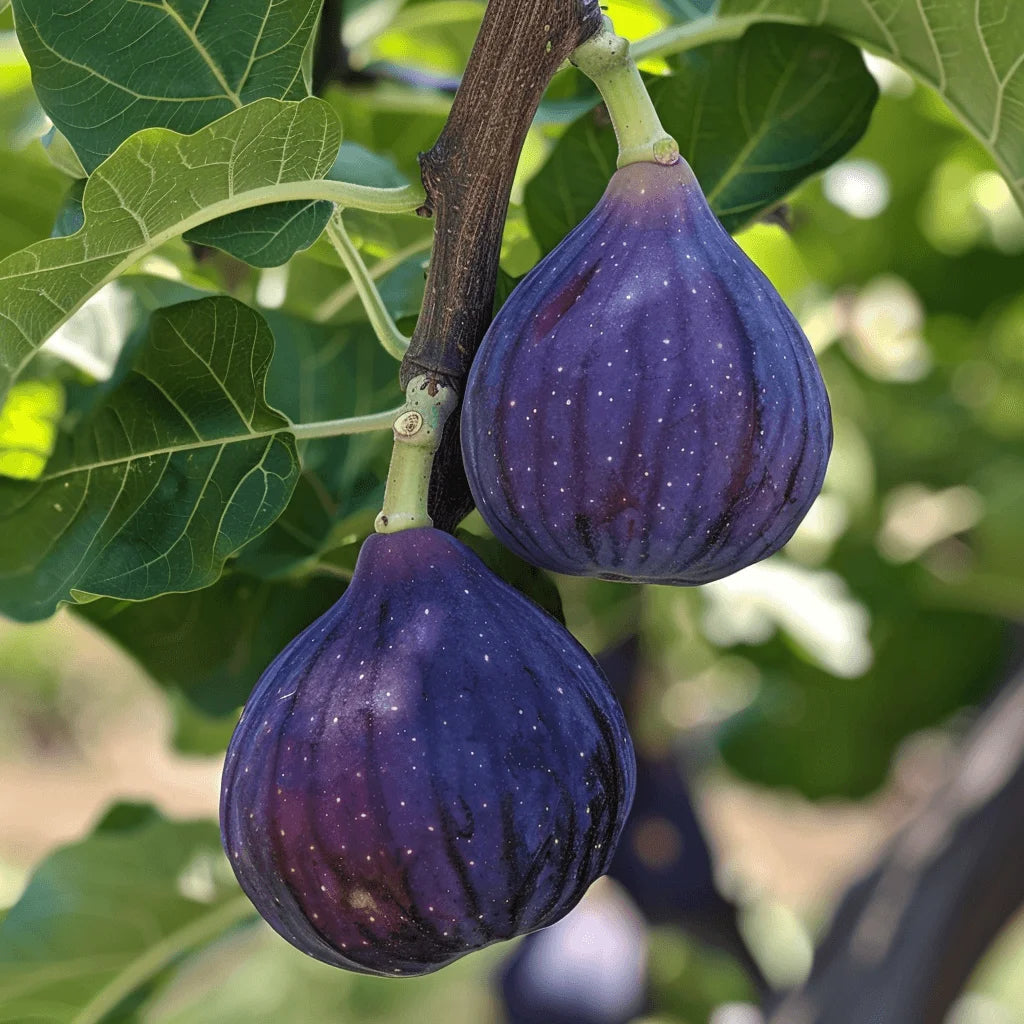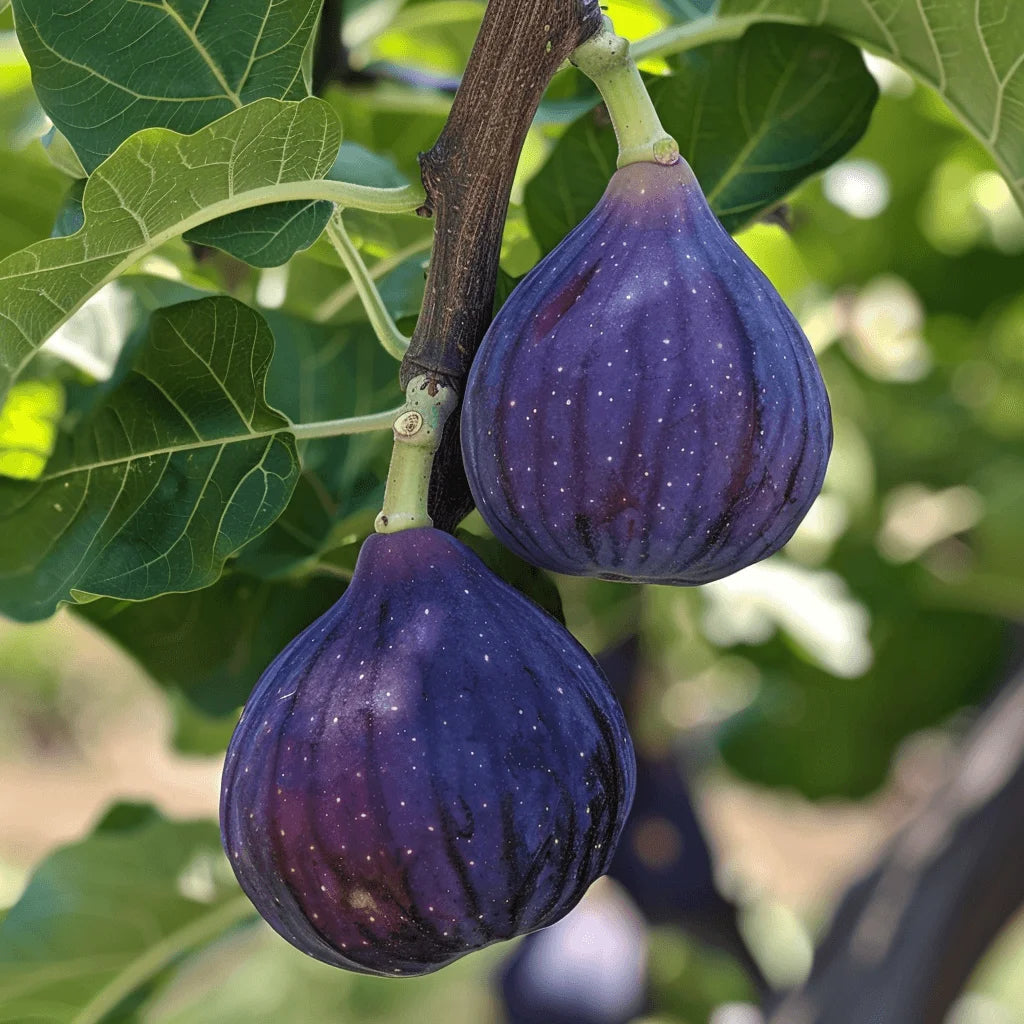About
The Texas Blue Giant Fig is a remarkable variety treasured for its vibrant fruit and robust nature.How tall does a Texas Blue Giant Fig tree grow?
A Texas Blue Giant Fig tree can grow to a height of 15 to 20 feet, making it a prominent feature in any garden. Its upright, expansive form allows it to fill vertical spaces beautifully. Despite its size, it can be pruned to fit smaller garden areas if needed.How long does a Texas Blue Giant Fig tree live?
With proper care, a Texas Blue Giant Fig tree can live for 30 years or more. Its longevity is enhanced by regular maintenance and protection from extreme environmental conditions. This enduring lifespan makes it a valuable addition to any collection of fruit-bearing trees.How fast do Texas Blue Giant Fig trees grow?
Texas Blue Giant Fig trees exhibit moderate to fast growth, typically adding a few feet each year when young. Their growth rate can accelerate under optimal conditions, including sufficient sunlight and regular fertilization. By the time they reach maturity, they boast a lush canopy and abundant fruit.How to care for Texas Blue Giant Fig trees?
Caring for Texas Blue Giant Fig trees involves providing consistent sunlight, proper watering, and regular feeding. Maintaining moist but well-drained soil is crucial, along with applying a balanced fertilizer in early spring. Mulching around the base aids in moisture retention and temperature regulation, promoting healthy growth and fruiting.When to prune Texas Blue Giant Fig trees?
The ideal time to prune Texas Blue Giant Fig trees is in late winter or early spring, before new growth begins. This timing allows gardeners to shape the tree, remove any dead or diseased branches, and encourage a healthy structure. Pruning at this time also supports robust fruit production in the upcoming season.How to prune Texas Blue Giant Fig trees?
Prune Texas Blue Giant Fig trees by first removing any dead or damaged branches. Next, thin crowded areas to improve air circulation and light penetration. Focus on maintaining a strong central leader and an open canopy to facilitate growth and fruiting.Why do we like Texas Blue Giant Fig?
The Texas Blue Giant Fig is loved for its delightful combination of beauty, resilience, and productivity. Its ability to produce large, sweet fruits while adapting to various climates makes it a versatile choice for gardens.| Mature Size | 15–20 ft tall × ~15–20 ft wide |
| Sunlight | Full (6-8 hours) |
| Spacing | 15–20 ft |
| Harvest Season | August to September |
| Pollination | Self-pollinating |
| Uses | Fresh eating, preserves, baking |
| Water Requirements | Moderate; moist, well-drained soil |

Growing Zone: 7-10
To plant Texas Blue Giant Fig trees, choose a site with full sun exposure and well-draining soil. Dig a hole twice as wide and as deep as the root ball, ensuring that the root collar sits level with the ground surface. Backfill with a mix of native soil and organic matter, then water thoroughly to eliminate air pockets.
The best time to plant Texas Blue Giant Fig trees is during the early spring or late fall, when temperatures are milder. This allows the roots to establish before the onset of extreme summer heat or winter cold. Ensure the tree has adequate water during its initial growth phases for optimal establishment.
Texas Blue Giant Fig trees should be planted 15 to 20 feet apart to accommodate their mature spread. This spacing ensures each tree has sufficient room for air circulation, sunlight exposure, and root development. Consider their potential height and width to prevent overcrowding and promote healthy growth.






